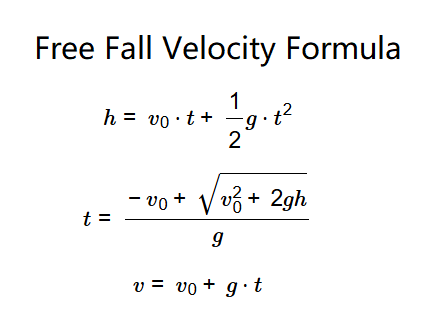 Home
Home
 Back
Back

Definition: This calculator determines the time of fall and final velocity of an object in free fall, given gravitational acceleration, initial velocity, and height.
Purpose: It’s used to analyze motion under gravity, useful in physics education and theoretical scenarios.
The calculator solves:
Unit conversions:
Explanation: Inputs are converted to base units (m/s², m/s, m), then time and velocity are calculated and converted to requested units.
Details: It helps understand gravitational motion, impact speeds, and fall duration in idealized conditions (no air resistance).
Tips: Enter gravity (default 9.80665 m/s²), initial velocity (default 0), and height. Use positive values. Outputs are time (s, min, hours) and velocity (m/s, mph, km/h) rounded to 3 decimal places.